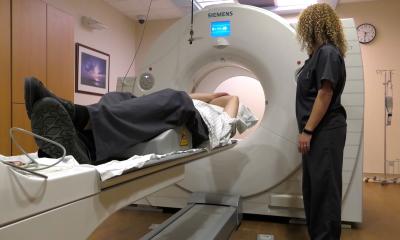Article • Precision CV medicine
New biomarkers for cardiovascular disease
A range of new biomarkers and diagnostics for precision cardiovascular medicine were outlined in a session at the British Cardiovascular Society annual conference held recently in Manchester.
Report: Mark Nicholls
Speakers from King’s British Heart Foundation Centre looked at how mass spectrometry allows clinicians to measure large numbers of proteins simultaneously, discussed a new biomarker for cardiac ischaemia that was discovered by a proteomics approach, highlighted a diagnostic structure-function atlas for titin mutations in inherited heart disease, and with first phase ejection fraction outlined a marker for LV diastolic dysfunction.
In his presentation ‘A multi-omics approach to cardiovascular risk in the era of precision medicine,’ Professor Manuel Mayr highlighted the advantages of mass spectrometry in measuring proteins.
Measuring a wide range of proteins and lipids

‘Mass spectrometry allows us to measure a large number of proteins simultaneously and to apply this technique to longitudinal cohorts so that we can associate biomarker measurements with onset of disease or disease progression,’ Mayr said. ‘Basic measurements to evaluate cardiovascular risk have not changed that much but, by using mass spectrometry, we can now measure a wide range of proteins and lipid species.’ He suggested that the time is right to take advantage of mass spectrometry profiling in clinical research and expand measurements from just monitoring total triglycerides, HDL and LDL cholesterol to deliver better cardiometabolic phenotypes of patients. ‘Using mass spectrometry, we can simultaneously measure an unprecedented number of apolipoproteins in a single analysis rather than measuring ApoB-100 and Apo-A1 as surrogate for LDL and HDL cholesterol,’ Mayr added.
In a recent study his group demonstrated that three VLDL-associated apolipoproteins, ApoE, Apo-CII and Apo-CIII, were associated with a higher risk of cardiovascular disease (CVD) and outperformed ApoB-100 in the Bruneck Study – a cohort with widespread use of statins. He discussed in detail the benefits of measuring a panel of apolipoproteins by mass spectrometry and said that the strong associations of certain triglyceride species and VLDL-associated apolipoproteins with incident CVD support the concept of targeting triglyceride-rich lipoproteins to further reduce risk of CVD in the statin era. ‘Currently, we just monitor lipid classes (total cholesterol, total triglycerides) as well as HDL and LDL cholesterol. The focus is on “quantity” rather than “molecular composition”. Targeting certain triglycerides and triglyceride-rich lipoproteins can be a future strategy to reduce residual cardiovascular risk,’ he pointed out.
Source: Shutterstock/Jarun Ontakrai
Tissue-based proteomics approach
Inflammatory biomarkers identified by a multi-omics approach in human symptomatic atherosclerotic plaques predict progression of atherosclerosis to manifest CVD
Manuel Mayr
Mayr’s research group has also set up a proteomics method to look for extracellular proteins in atherosclerotic plaques and highlighted the differences between plaques from symptomatic ad asymptomatic patients. He noted that the inflammatory signature identified in symptomatic carotid endarterectomy samples could be measured in plasma. The plasma signature was not associated with early stages of atherosclerosis but was associated with progression of early atherosclerosis to advanced atherosclerosis and cardiovascular diseases. ‘Inflammatory biomarkers identified by a multi-omics approach in human symptomatic atherosclerotic plaques predict progression of atherosclerosis to manifest CVD,’ Mayr concluded.
Using a tissue-based proteomics approach to identify inflammatory plaque biomarkers could reveal novel companion diagnostics for anti-inflammatory and aggressive lipid lowering therapy. With a shift in risk factors and the advance of novel treatment strategies, there may be a need to expand on the current cardiovascular biomarkers.
In other presentations by speakers from King’s College London, Professor Michael Marber discussed cardiac myosin binding protein C as a novel biomarker for cardiac ischaemia; Professor Matthias Gautel spoke about ‘A diagnostic structure-function atlas for titin mutations in inherited heart disease’, and Professor Philip Chowienczyk described ‘First phase ejection fraction – a marker for LV diastolic dysfunction’.
Profile:
Manuel Mayr is British Heart Foundation Professor of Cardiovascular Proteomics at King’s College London. He gained his medical degree at the Medical University of Innsbruck, Austria, and PhD in the University of London in 2005 for his thesis ‘Cardiovascular Proteomics: Linking Proteomic and Metabolomic Changes’. He moved to KCL as Lecturer in the Cardiovascular Division in 2006 and by 2011 he achieved promotion to Professor. In 2013, he received the Outstanding Achievement Award by the European Society of Cardiology Council for Basic Cardiovascular Science.
01.09.2018











